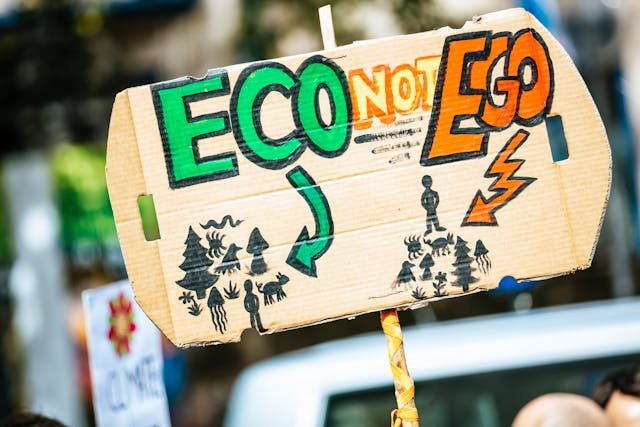
How to Offset Your Carbon Footprint While Traveling: A Sustainable Journey

How to Offset Your Carbon Footprint While Traveling: A Sustainable Journey
Traveling is one of life’s greatest joys, offering us the opportunity to explore new cultures, landscapes, and experiences. However, with increasing awareness about climate change, it’s essential to recognize that travel, particularly air travel and other fossil fuel-based transportation, contributes significantly to global carbon emissions. But don’t worry—this doesn’t mean we need to stop traveling altogether! Instead, we can adopt smarter, more responsible travel habits and offset our carbon footprint to ensure that our love for exploration doesn’t harm the planet.
Understanding Carbon Footprint in Travel
A carbon footprint refers to the amount of greenhouse gases (mainly carbon dioxide) emitted into the atmosphere as a result of human activities. In terms of travel, our carbon footprint is mostly generated by transportation—airplanes, cars, trains, and buses. Accommodation, food choices, and leisure activities also play a role in increasing emissions. The good news is that with a little bit of planning and conscious effort, you can travel sustainably and reduce your environmental impact.
1. Opt for Greener Modes of Transport
The most significant contributor to travel-related carbon emissions is transportation, particularly air travel. While flying is sometimes unavoidable, there are several alternatives you can explore to minimize your footprint:
**Take Trains or Buses:** Trains and buses are far more fuel-efficient than airplanes, especially for short or medium-distance travel. Rail travel not only lowers your carbon emissions but also offers scenic views, making your journey more enjoyable. In Europe and parts of Asia, high-speed trains are an excellent option for quick, low-impact travel.
**Carpool or Use Electric Vehicles:** If driving is necessary, try to carpool with others to share the emissions load. Even better, consider renting or using an electric or hybrid vehicle for your trip. Many destinations now offer EV charging stations, making it easier to go green on the road.
**Fly Direct Whenever Possible:** If flying is unavoidable, book direct flights rather than those with layovers. Takeoffs and landings consume a large portion of fuel, so direct routes reduce emissions.
2. Choose Eco-Friendly Accommodations
Where you stay during your travels also plays a role in your carbon footprint. Many hotels and accommodations are now taking steps to operate sustainably:
**Book Eco-Certified Lodging:** Look for hotels and accommodations with certifications like Green Key, LEED, or EarthCheck. These establishments follow sustainable practices like energy-efficient lighting, water conservation, and using renewable energy sources.
**Support Local, Small-Scale Lodgings:** Opt for locally owned eco-lodges, homestays, or guesthouses that prioritize sustainability. Smaller accommodations often have a smaller environmental impact and contribute directly to the local economy.
**Reduce Energy and Water Usage:** Whether you’re staying in a hotel or Airbnb, make it a habit to conserve energy and water. Turn off lights and appliances when not in use, reuse towels, and take shorter showers to reduce water consumption.
3. Pack Light and Travel Sustainably
How you pack can have a surprising effect on your carbon footprint. Lighter bags result in less fuel consumption, especially when flying:
**Pack Light:** The lighter your luggage, the less weight the plane or vehicle has to carry, reducing fuel consumption. Packing light also makes your trip more convenient and flexible!
**Choose Reusable Travel Gear:** Invest in reusable items like a stainless-steel water bottle, bamboo cutlery, and cloth bags to avoid single-use plastics. Bringing your own toiletries in travel-sized reusable containers can also minimize waste.
**Opt for Eco-Friendly Fabrics:** When selecting your travel wardrobe, consider clothing made from sustainable materials like organic cotton, hemp, or bamboo. These fabrics have a smaller environmental impact compared to traditional cotton or synthetic materials.
4. Offset Your Carbon Emissions
Even after taking measures to minimize your carbon footprint, it’s challenging to eliminate emissions entirely, especially when flying. That’s where carbon offsets come in:
**Purchase Carbon Offsets:** Carbon offset programs allow you to invest in projects that reduce or capture carbon emissions elsewhere. These projects can include reforestation, renewable energy development, and methane capture from landfills. By purchasing offsets, you can neutralize the emissions from your travel. Websites like Gold Standard, TerraPass, and ClimateCare offer credible offsetting options.
Choose Projects that Make a Real Difference: Not all carbon offset programs are equal, so make sure to research the project you’re investing in. Look for projects that are verified by organizations like the Verified Carbon Standard (VCS) or The Gold Standard.
5. Embrace Slow Travel
Slow travel is a growing movement that emphasizes quality over quantity when it comes to exploring new destinations. Instead of rushing from one tourist hotspot to another, slow travel encourages travelers to spend more time in fewer places, engaging deeply with the local culture, environment, and community.
**Stay Longer in One Place:** By spending more time in a single location, you reduce the frequency of long-haul flights or drives and lower your overall carbon emissions. It also allows you to immerse yourself in the local culture and environment, fostering a more meaningful travel experience.
6. Support Local and Sustainable Tourism
While traveling, your choices can have a significant impact on the local environment and economy:
**Choose Responsible Tour Operators:** Look for tour companies that focus on sustainable, eco-friendly practices. They may offer wildlife-friendly tours, promote community-based tourism, or use green transport options.
**Buy Local and Eat Sustainably:** Support local businesses by buying handmade crafts and eating at restaurants that source their ingredients locally. This helps reduce food miles and boosts the local economy. Look for places that offer plant-based or vegetarian options, which have a lower carbon footprint than meat-based meals.
Final Thoughts
Offsetting your carbon footprint while traveling is more than just an environmental responsibility—it’s a way to protect the places we love to explore. By making thoughtful choices, reducing our impact, and offsetting what we can’t avoid, we can ensure that future generations will be able to enjoy the beauty of the world as we do today. So pack your bags, but don’t forget to pack your eco-conscious mindset too! Let’s explore the world, sustainably.
Whether you’re planning a 2-day trip, a quick weekend getaway, or a longer stay, ." So pack your bags, gather your friends, and set off on an unforgettable adventure.




